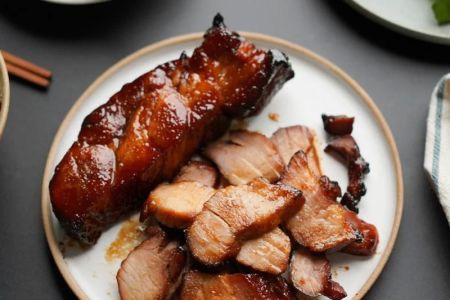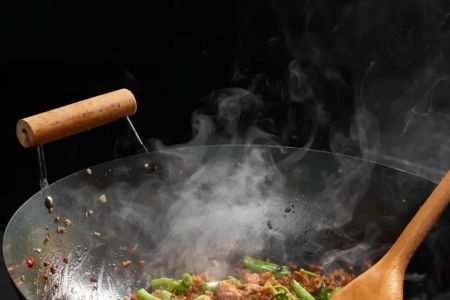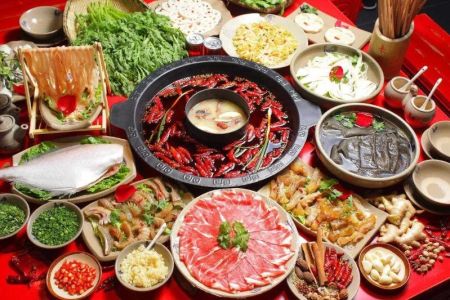The Chinese Tea Ceremony: A Tradition of Elegance and Culture
- What is the Chinese Tea Ceremony?
- The History of the Chinese Tea Ceremony
- Steps of the Chinese Tea Ceremony
- The Importance of the Chinese Tea Ceremony
- The Chinese Tea Ceremony in Modern Times
1. What is the Chinese Tea Ceremony?
The Chinese tea ceremony is a ritualistic preparation and presentation of tea that is deeply rooted in Chinese culture. This ceremony is not just about drinking tea; it is a practice that involves respect, mindfulness, and a deep connection with nature. Often accompanied by a particular set of movements, the Chinese tea ceremony emphasizes the aesthetics and the sensory experience of tea. It is a symbol of peace, refinement, and harmony.
While the specific steps and rituals may vary depending on the region and occasion, the core purpose of the ceremony remains consistent: to honor the tea and create a space for reflection and connection between the participants.
2. The History of the Chinese Tea Ceremony
The Chinese tea ceremony dates back thousands of years, with origins in the Tang Dynasty (618–907 AD). Tea drinking was initially a medicinal practice, but over time, it evolved into a cultural and social ritual. By the Song Dynasty (960–1279 AD), tea ceremonies became an essential part of Chinese social gatherings.
Tea has always been a significant part of Chinese culture, both as a beverage and as a symbol of hospitality. The practice of the tea ceremony became refined over centuries, with scholars, poets, and artists often engaging in these rituals as part of intellectual and aesthetic pursuits.
3. Steps of the Chinese Tea Ceremony
The Chinese tea ceremony follows a series of deliberate steps, designed to enhance the sensory experience of tea preparation and consumption. The following are the basic steps involved:
- Preparation of the Tea Set: The tea set, often consisting of a teapot, cups, tea tray, and a kettle, is carefully arranged. The utensils are cleaned and warmed to prepare them for use.
- Boiling Water: Fresh, filtered water is heated to the ideal temperature for the type of tea being used. For green tea, water should not be too hot, while oolong and black teas require hotter water.
- Rinsing the Tea Leaves: Tea leaves are briefly rinsed with hot water to open up their aroma and flavor. This step also helps remove any dust from the leaves.
- Brewing the Tea: The tea leaves are placed into the teapot, and hot water is poured over them. The tea is allowed to steep for the appropriate amount of time, depending on the type of tea being brewed.
- Serving the Tea: The tea is carefully poured into small cups, often by the host who presents the tea with great care and attention. The tea should be served to guests in a respectful and mindful manner.
4. The Importance of the Chinese Tea Ceremony
The Chinese tea ceremony is more than just a way to prepare and enjoy tea. It is a deeply symbolic practice that embodies values such as respect, harmony, and mindfulness. The ceremony allows participants to slow down, focus on the present moment, and engage in a meaningful exchange.
For centuries, the Chinese tea ceremony has been a way to connect with others, share stories, and foster relationships. Whether performed in intimate family gatherings or as part of larger social events, the ceremony creates a space for reflection and celebration of tea's cultural significance.
5. The Chinese Tea Ceremony in Modern Times
In today’s fast-paced world, the traditional Chinese tea ceremony may seem like a rare occurrence. However, its essence lives on in many modern tea houses and homes across China and around the world. While the elaborate rituals may not always be followed to the letter, many tea lovers still cherish the practice of preparing and drinking tea with mindfulness and respect.
Many tea lovers and cultural enthusiasts have embraced the ceremony as a way to reconnect with nature and take a break from the stress of everyday life. In cities like Portland and New York, tea houses have adopted elements of the traditional Chinese tea ceremony, offering patrons the opportunity to experience this calming and reflective practice.
Additionally, online resources and instructional books are available for those who wish to learn the art of the Chinese tea ceremony from the comfort of their homes. These resources guide tea enthusiasts through the steps of the ceremony and provide insight into the history and cultural significance of tea in China.






![Top Chinese Restaurants for Authentic Cantonese Cuisine in [Your City]](https://img.gochinarose.com/d33/2507/4157910400_450x300.webp)
